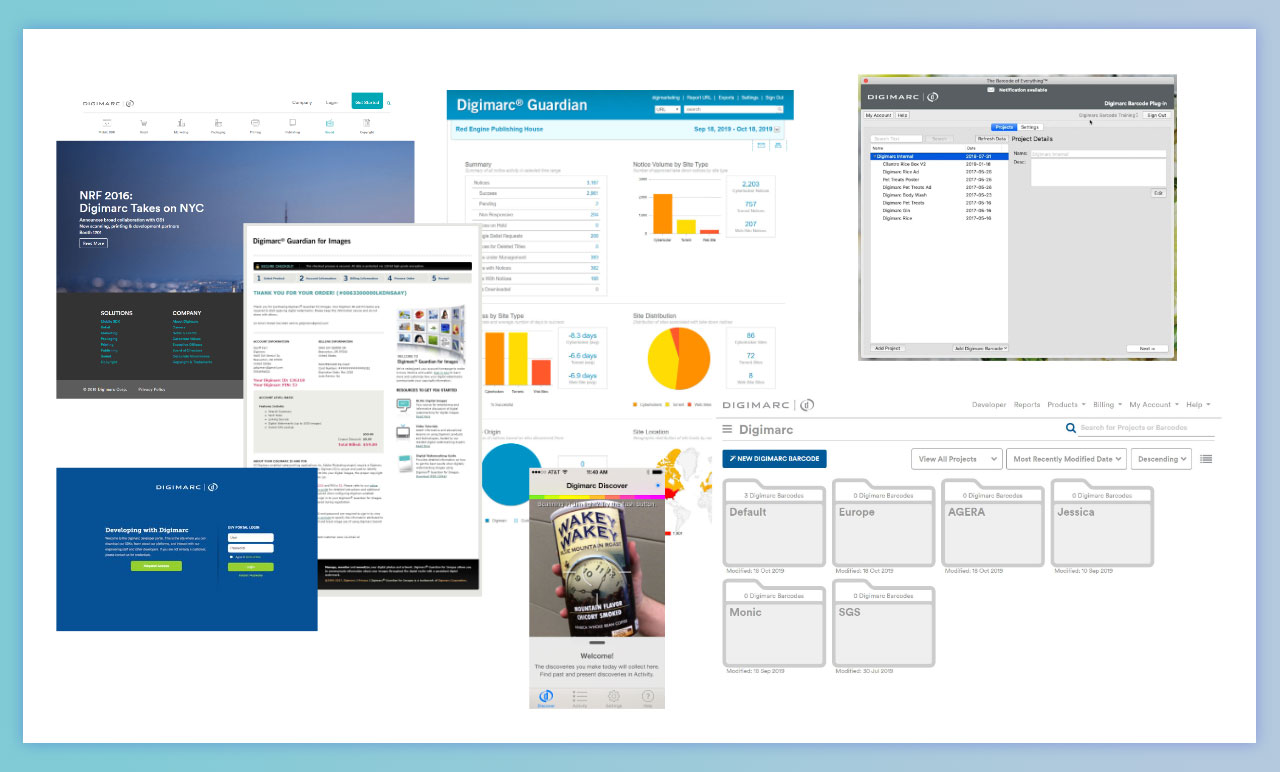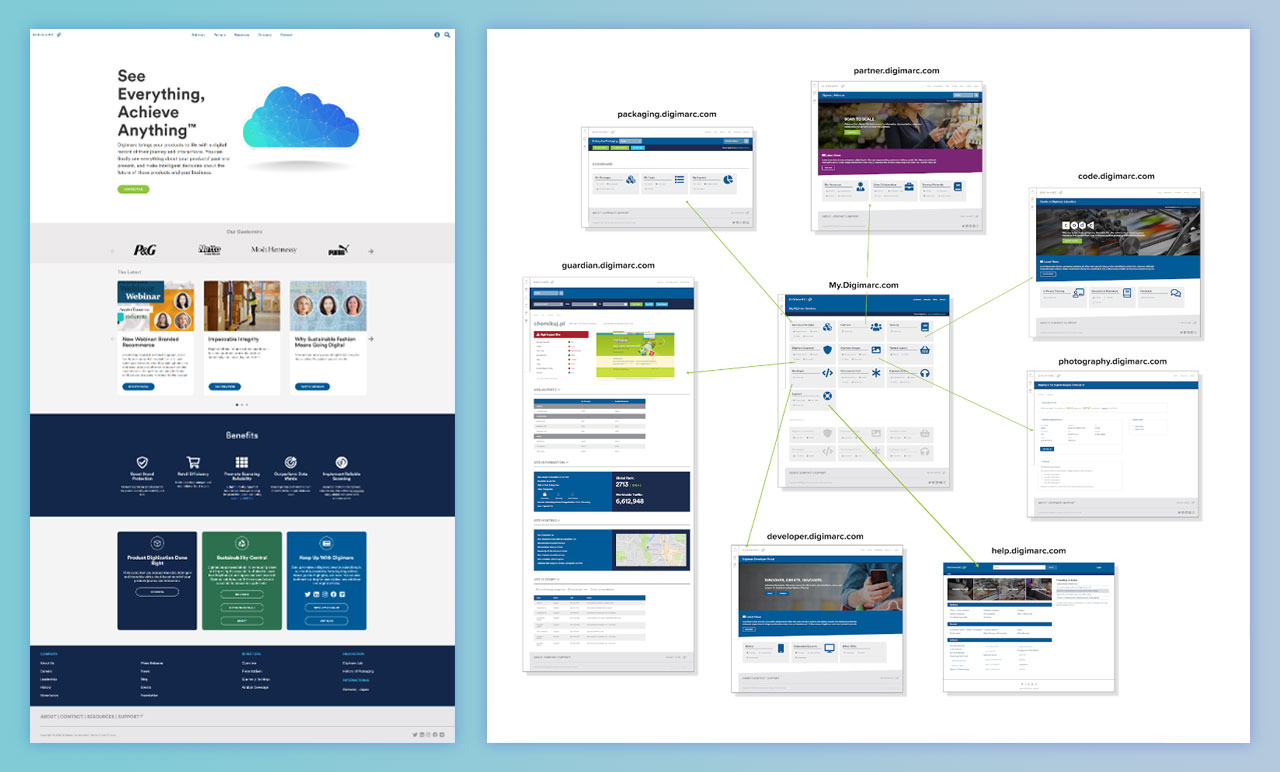Uniting The Platform
TL;DR // Results
I drove major changes to turn an IP/Legal/ENG led company into a real product company.
- Reduced required login credentials to use company products from 12 different sets to 1
- Flipped onboarding from inappropriate B2C "walk-up" sign ups to a white-glove, enterprise onboarding
- Created a unified product portal with consistent design and branding with upselling opportunities
- Integrated all products into salesforce CRM so that turning products and features on and off could be done in salesforce instead of only through our engineering managers, enabling our sales team and our CSRs
None of these are revolutionary ideas, but what I think is remarkable is leading and driving these initiatives with ZERO title authority from a normally uninfluencial role in the marketing department.
The Problem
Digimarc spent many years running primarily as a licensing IP company. When I was hired in 2013, the company was just on the cusp of moving to a product driven organization, and over the years of the transition that followed, there were many tough lessons.
One aspect the organization had to overcome was that many of the tools and services they offered were designed to be "proofs-of-concept" that could be patented and licensed to other companies to develop into actual integrated products, rather than a polished SaaS platform offering. Design, interface, and user experience were all concepts that were foreign to the organization, which had previously always had engineering, and to an extent legal, in the driver's seat.
Functionally, this manifested as products and services with no intuitive connection. From inconsistent design and branding, no links between products to cross or upsell services, and even requiring unique login credentials for each service, the end-user experience created nothing but friction for the sales team.
Here's a look at their digital ecosystem in 2013, note the inconsistent branding and checkered UI choices that look dated from various bygone internet eras.

The Fix
I rallied several departments including product, engineering, IT, and marketing team to put together a unification project to make doing business with Digimarc a more cohesive experience. It was no easy feat to get these departments to leave the silo mindset, their individual fiefdoms, and start working together in a single direction. I took a leadership role in facilitating this work with influential people from each department.
The first step was to get our branding up to date. A defunct agency had done our last corporate website refresh, so our marketing department reasserted itself over the company branding. Once we had something to start from, we set up a web portal to sit on top of all of the previously independent services. We called this top level portal My.Digimarc.
With My.Digimarc, we began systematically going through each independent service and rebranding/reskinning, or where necessary, completely rethinking and rebuilding each of our services.
All of our services began to have a unified look and feel. Each service implemented a consistent global navigation that dynamically populated the services to which that user had access. This let users intuitively navigate all the services and support sites.
We replaced the authentication systems as we went, ensuring that a single login was required, rather than letting each service have its own user database. We integrated all of this into salesforce.com, so that sales and customer reps within our organization would have access to view user information with the ability to monitor and edit user access to the company's apps and services.
Here's a look at their digital ecosystem once I got some headway into this process:

Impact
The result of this work was a much more cohesive product offering. One that provided a much more consistent experience across products, and simplified delivery of additional product content such as software downloads, help content, and support. It also provided the scaffolding for new services so that each new project had a template from which to launch, resulting in quicker development with more consistency.
The major takeaway here is that this project, in my opinion, is representative of leadership in maybe its purest form. I wasn't in some executive position with the authority to tell everyone to get on board with this new direction. I had to lead in a way that compelled the organization to follow.